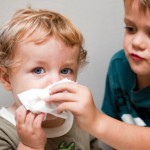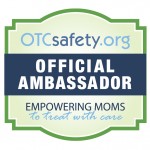 Fall is upon us and with the cool, crisp days and freshly stocked backpacks, we all know that flu and cold season is not far behind.
Fall is upon us and with the cool, crisp days and freshly stocked backpacks, we all know that flu and cold season is not far behind.
It’s inevitable. Back to school means back to treating and preventing those viruses responsible for the common cold and flu.
My kids know the drill: wash your hands before eating, sneeze and cough into the crook of your elbow, and don’t share drinking or eating utensils.
Still, it will happen. My children will sniffle, cough, and sneeze. Yours will too.
However, there are ways to minimize the number of colds your child gets and we can all take precautions to lessen our chances of contracting the flu.
The most frequently asked question? How can I tell if it’s just a cold or if my child has the flu?
Key characteristics of the common cold
Colds come on gradually and affect your child’s upper respiratory system. You’ll see or hear a runny/congested nose, wet sounding cough, mildly sore throat, and possibly a low grade fever (typically less than 101 F).
Your child may still have plenty of energy, eat and drink as usual, and sleep just fine throughout the duration of her cold. The typical cold lasts between 7 to 10 days and aside from the annoyance of a runny nose and cough, your child will be able to keep up with her daily activities.
Now, here comes the flu and it hits hard and fast
Your previously well child may suddenly wake up with a high fever of 103 F. Even as a fairly seasoned mom and pediatrician, those soaring high temperatures that seem to pop up out of nowhere still rattle me a bit.
However, as I’ve learned and continue to remind myself, fever in and of itself is nothing to fear.
Soon, you’ll see the fatigue and irritability taking hold. He may not want to eat either. Muscle and body aches ensue and headaches are quite typical. As opposed to the common cold where respiratory symptoms like runny nose and cough are prominent, the flu does not cause significant congestion or cough. If your child does come down with respiratory symptoms, they’re generally mild and the cough is dry and hacking versus wet sounding with a cold.
Fortunately, although the flu keeps a child home from school and hits him or her much harder than the run of the mill cold, most healthy children will recover completely within 7 to 10 days.
My family’s favorite remedies
Both the common cold and the flu are caused by viruses, so antibiotics are unnecessary and won’t hasten the resolution of these infections. So, while you’re nursing your little one back to her previously rambunctious self, keep these simple and effective remedies in mind.
- Hydration: keep a cup of water near your child. Encourage her to sip frequently, even if it’s in small amounts. Fever, congestion, and coughing can cause excess water loss and you don’t want her to become dehydrated. As an added bonus, that extra fluid will aid in thinning out troublesome mucus and congestion.
- Cool mist humidifier: I really love these. Run one in your child’s room to help with sore throats, dry/congested noses, and to decrease coughing frequency.
- Normal saline nose drops: Works great in conjunction with a suction bulb for infants and toddlers who are unable to blow their little noses. Use prior to eating and sleeping to keep those nasal passages clear. Believe me, it will make nap and bedtime much more peaceful.
- Honey: This natural and sweet elixir has been shown to reduce the frequency and severity of nighttime coughing. And, since over-the-counter cough and cold medicines are not recommended for children under the age of 6. This is a great way to give your child some nighttime relief. One important caveat: Children younger than 1 year old should not be given honey due to the risk of botulism.
When to use acetaminophen and/or ibuprofen
If your little one has the flu, she’s likely to have some aches and pains that warrant a good pain reliever. Just be sure to check the dose and base it on your child’s weight. Only use ibuprofen for children older than 6 months old, and if your child has asthma or is prone to it, consider the use of ibuprofen over acetaminophen.
A word about fever
Fever is actually a good thing. It’s the body’s way of stimulating your child’s immune system to fight off an infection. In fact, aim to take a hands-off approach when it comes to fever. If your child’s fever is below 102 F, do your best to resist reaching into the medicine cabinet.
Prevention matters
Keep your child’s immune system in tip top shape by making sure she gets 10-11 hours of sleep per night (for school aged children). Other immune boosters are daily exercise and eating well balanced meals with plenty of fruits and vegetables.
Encourage hand washing and hand sanitizing (especially in classrooms). Teach your children to sneeze and cough into the crook of their elbows.
Get the yearly flu vaccine.
Dr. Mom’s bottom line: When it comes to cold and flu season, none of us are immune. However, arming yourself with the ABCs of treatment and prevention will help keep your family in school, at work, on the soccer field…wherever you need to be.
This is a sponsored post written by me on behalf of Target. The opinions and text are all mine.
Visit WebMD’s “Mom’s Guide to Family Health” for more information on how you can keep your family healthy through the cold & flu season.
Pin It









[…] child feel better. For a few suggestions on treating the common cold, check out Dr. Arca’s great post. If you are facing vomiting and diarrhea, Dr. Swanson’s got you […]
[…] under the age of 4 should NOT be given OTC cough and/or cold medicines. There are plenty of other ways to help your little one through the stuffy noses and coughs of cold and flu […]